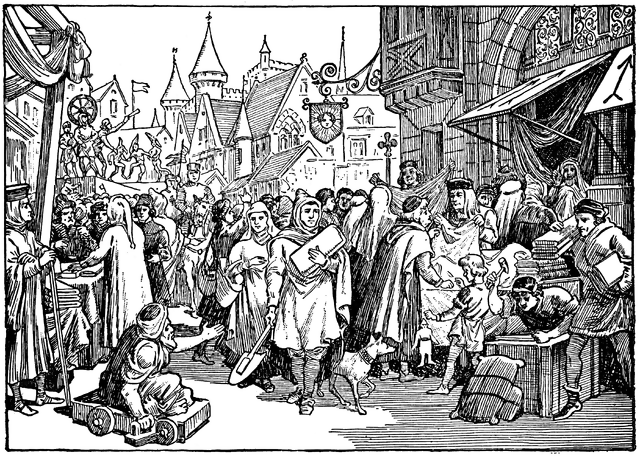HISTORICAL PRECEDENTS
Play Streets
Street fairs and bazaars, markets, block parties, and similar temporary events have brought life to streets for millennia, proving that our thoroughfares fulfill a rich social and economic purpose as much as a utilitarian one.
Mike Lydon & Anthony Garcia (2015). Tactical Urbanism Short-term Action for Long-term Change

Les Bouquinistes
Les bouquinistes, in Paris, date from the 1500s and since 1992 its little green boxes have been part of a United Nations Educational, Scientific and Cultural Organization (UNESCO) World Heritage site designation for the River Seine, which makes this example one of the slowest, if not the most lauded examples of Tactical Urbanism we’ve found to date
Mike Lydon & Anthony Garcia (2015). Tactical Urbanism Short-term Action for Long-term Change
Mike Lydon & Anthony Garcia (2015). Tactical Urbanism Short-term Action for Long-term Change


Mobile Libraries
Some of the earliest examples of mobile libraries, from 1858, involved the Mechanics Institute of Warrington, England. The institute organized a “perambulating library” with a subscription service for working-class men who paid a small fee in order to bring education to those who could not otherwise afford it. The van, horse, and books cost £275, and more than 12,000 books were borrowed in the first year.
Mike Lydon & Anthony Garcia (2015). Tactical Urbanism Short-term Action for Long-term Change
Mike Lydon & Anthony Garcia (2015). Tactical Urbanism Short-term Action for Long-term Change
The World’s Fair
On the other end of the spectrum of buildings that reflect Tactical Urbanist values are large-scale temporary structures and monuments, such as those that result from the World’s Fairs. The built legacy of many of these events is not in the large-scale development that characterizes them but in the public spaces and buildings that they leave behind, which form part of the current fabric of cities such as Paris, New York, Chicago, and St. Louis.
Mike Lydon & Anthony Garcia (2015). Tactical Urbanism Short-term Action for Long-term Change


The Woonerf
The invention of the Dutch woonerf – a street that accommodates pedestrians, bicyclists, and people recreating, in addition to cars - stands out because unlike many street design innovations from the last 100 years, it did not originate from the profession of traffic engineering but from citizens seeking to slow traffic in their community
Mike Lydon & Anthony Garcia (2015). Tactical Urbanism Short-term Action for Long-term Change
Mike Lydon & Anthony Garcia (2015). Tactical Urbanism Short-term Action for Long-term Change

The Vegetable Car (Berkeley, 1983)
Early version of guerrilla garden and precursor to the ‘parklets’ in San Francisco in the early 2000s
Urban Design Thinking: A Conceptual Toolkit – Chapter 27: Temporary/Tactical
Urban Design Thinking: A Conceptual Toolkit – Chapter 27: Temporary/Tactical